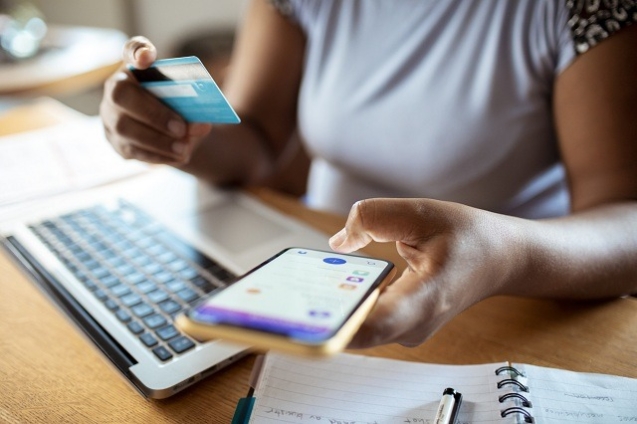
Finding a long-term partner is trickier than ever, argues Paul C Brunson, a lead researcher at Tinder.
David Robson asks him how cultural and technological shifts are changing our relationships.
Technology offers us many new opportunities for meeting romantic or sexual partners, but has this altered our overall attitudes to dating and relationships?
To find out, science writer David Robson spoke to Paul C Brunson, head of global research at Tinder and author of the new book Find Love: How to Navigate Modern Love and Discover the Right Partner for You.
Is it true that finding a partner is harder now than ever before?
Finding a partner has always been a very important decision, but based on the research for this book, I do believe that finding and keeping love today is harder than any point in human history. One reason is that today, we have more variations of what is considered an acceptable relationship.
You can be monogamous or in a polyamorous relationship, living together or living apart – there are dozens and dozens of acceptable forms. And that makes finding the partner to match your end goal more challenging.
Secondly, we demand more from our partner than ever before. Formerly, it was the person to help protect or raise the child, or to tend the farm. Then, as you move through the ages, it became someone who would be a companion.
But now – as [psychologist] Eli Finkel discusses in his research – we’ve reached a point of “self-evolution”, where we are searching for everything out of our partner. We want them to be our intellectual equal, we want them to be the CEO of the business that we launch, we want them to be a great co-parent, we want them to be a phenomenal sex partner.
How about technology? Some people seem to feel overwhelmed by the opportunities of meeting new people.
We fool ourselves into the paradox of choice. We believe that we have endless options. But in actuality, if you downloaded 100 dating apps, how many actual dates could you get that week? It’s limited, so we don’t have as many choices as we believe.
In your book, you describe another apparent paradox: the fact that on average, people are less happy with their relationships, but the top 20% – those who are the most happy with their partners – are even more content than they had been. How do you explain that?
Many marriages now have low satisfaction, and there’s a variety of reasons. For example, we are aware that there’s more choice and believe the grass is greener, and we also have more knowledge.
You can take an assessment of attachment style online, for example, and figure out whether or not you or your partner are paired in a strong way.
That could create doubts about the relationship?
Right, a lot of people are disgruntled. But some people are using these tools to their advantage. They are trying to figure out the void in their relationship, so they can make it better.
They are inspiring each other to work on their wellbeing. This means there is a smaller percentage of people with high satisfaction, and a large percentage with, unfortunately, lower satisfaction.
You mentioned attachment styles. How do they reflect our childhood experiences with our caregivers, and how do they influence our adult relationships?
You have secure attachment, which is essentially someone who, when their caregiver was absent, felt secure and were able to self-soothe.
They knew their caregiver would come back. Then you have the anxious attachment style: if the caregiver left the room and came back, they would have a hard time restabilising, because they’re anxious that the caregiver could leave again.
There’s the avoidant attachment style: if the caregiver left the room and came back, the child doesn’t care, because they believe that the caregiver doesn’t really care about them, and so they can only rely on themselves.
The fourth category is “disorganised”, which is a combination of avoidant and anxious.
The way that we attached as children is often how we attach as adults to our loved ones. So you can see someone who has an anxious style is always concerned that their partner is going to leave.
Someone who has an avoidant style is not going to be emotionally open to their partner. A secure style is essentially going to be healthier.
Attachment styles have become very popular, but it’s important to be aware of the cultural differences and the cultural nuances. A child who is considered anxious in one area may be considered secure in another, because of how the child is raised differently.
Given your work at Tinder, what kinds of errors are people making in their approaches to online dating?
There are several mistakes. One is not doing the work ahead of time to identify the relationship goal. Because there are so many types of variations.
We’ve now built a feature into Tinder that allows you to select your relationship goal. Because, if you’re looking for a long-term partner, but I’m looking for a short-term partner, and we enter a relationship, it’s going to be disastrous.
Another big problem is that the photos are atrocious. People don’t have recent photos, so when they show up on the date, they look nothing like the picture. It can seem like they are intentionally catfishing – but they’re not.
You know, when I joined Tinder two years ago, I had to open an account to see what it was all about, and I loaded a photo that was probably 12 years old. Now the person [I was working with] at Tinder said Paul, you don’t look like that. All of us think we look like we did 10 years ago, but we don’t.
You should have three to five photos – one that shows a genuine smile, one that shows your full body, and some photos of you doing something that you’re passionate about.
Last but not least, include some “beige flags” on your profile. These are the things that people may perceive as quirky, but you own it. One beige flag that I might [personally] give is that every month I play Dungeons and Dragons.
A lot of people might make generalisations, and turn away. But then there would be another group that will be interested. And the fact that I have included my beige flag shows how much self-esteem I have, because I’m putting it out there.
Are there any big generational differences in dating?
We have to understand that Gen Z in your city or country may be different from the Gen Z population in another city or country, but there are generational differences. And one of the things I love is that they value authenticity.
In our research at Tinder, we found that the number one determinant as to whether or not they wanted a second date was whether they felt comfortable being themselves with their partner, whereas in all previous generations, physical attraction was number one.
Now, physical attraction was still number two [for Gen Z], but we’re making strides.
Paul C Brunson’s book Find Love: How to Navigate Modern Love and Discover the Right Partner for You is published by Vermilion.
*David Robson is an award-winning science writer. His next book is The Laws of Connection: 13 Social Strategies That Will Transform Your Life, to be published by Canongate (UK) and Pegasus Books (USA & Canada) in June 2024. He is @d_a_robson on X and @davidarobson on Instagram and Threads.






